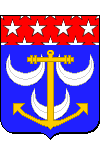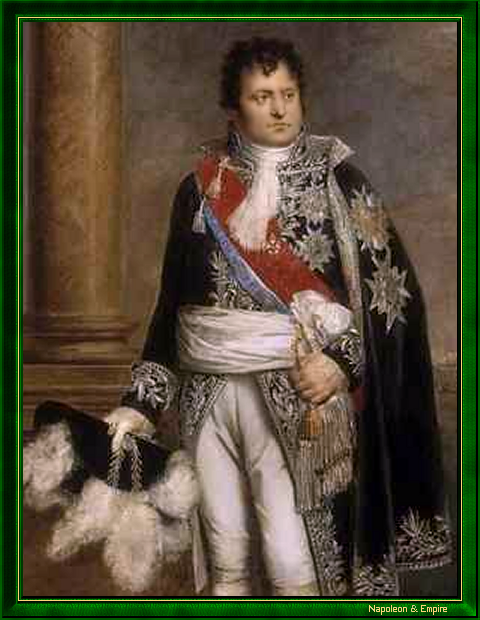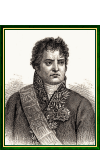Denis Decrès
Duke of the Empire
Pronunciation:

Denis Decrès, born in Chaumont on June 18, 1761, began his naval career in 1779. In 1781, he was promoted to ensign after distinguishing himself by rescuing a disabled vessel under fire from the English fleet (West Indian Sea, April 12 or 13). He then distinguished himself at the battle of Les Saintes (April 9-12, 1782) and was rapidly promoted.
Employed in the American and Indian seas, he didn't return to France until 1794. It was to learn that he had been appointed capitaine de vaisseau a year earlier, and had since been dismissed as a ci-devant noble. Imprisoned, he was released after the 9th Thermidor, reinstated, and took part in the Irish expedition.
In 1798, as rear-admiral, he took part in the Egyptian expedition, during which he escaped from the English during the battle of the Nile, but was caught shortly afterwards while bringing sick soldiers back to France on the Guillaume Tell (March 29, 1800).
After his swift release, Decrès was successively Maritime Prefect of Lorient, Commander of the Rochefort Squadron, and finally Minister of the Navy in 1801.
When he took office, he found a fleet of fifty-four vessels and forty-one frigates, which Napoleon Bonaparte commissioned him to double, but also a still disorganized administration and empty arsenals.
By opening new shipyards, reorganizing maritime personnel and ministry departments, Decrès succeeded in setting up the fleet destined to land in England and the fleet for the Saint-Domingue expedition. The failures, for which he was not responsible, did not dampen his courage and energy.
Vice-admiral in 1804, duke in 1813, he left his post in 1814, leaving a fleet of one hundred and four vessels (of which thirty-one were under construction) and fifty-one frigates, fully crewed and with two naval schools, in Brest and Toulon. Only the high command lent itself to criticism, as the highest peaks of the hierarchy had proved, under his ministry, easier to climb through obedience than through superior talent.
Decrès was recalled during the Hundred Days and named a Peer of France . After the second abdication, he agreed to be one of those who asked Napoleon 1st, who had retired to Malmaison, to leave France.
The second Restoration retired him in 1815.
He died in Paris on December 7, 1820, as a result of an explosion caused by a servant trying to cover up a theft by accident.
His magnificent tomb is located in the Père Lachaise cemetery, division 39.
"Denis Decrès, Minister of the Navy in 1801" by René Théodore Berthon (Tours 1776 - Paris 1859).

Difficult and demanding with his subordinates, very attached to his prerogatives, Decrès was held in high esteem by the Emperor, who willingly listened to him. Decrès is generally hated," he said, "but people are wrong, he has done great service to the navy. He is very capable and a man of spirit [...] With that he is hard, not very obliging. That's why we don't like him.
Decrès's name is inscribed on the 33rd column (West pillar) of the Arc de Triomphe de l'Étoile.
Addres
33, Rue du Faubourg Saint-Honoré. Paris 8th arrondissement
It was in 1810 that Duke Decrès bought the Hôtel Perrinet de Jars (also known as the Hôtel de Guébriant).Other portraits

"Duke Denis Decrès". Nineteenth century etching.